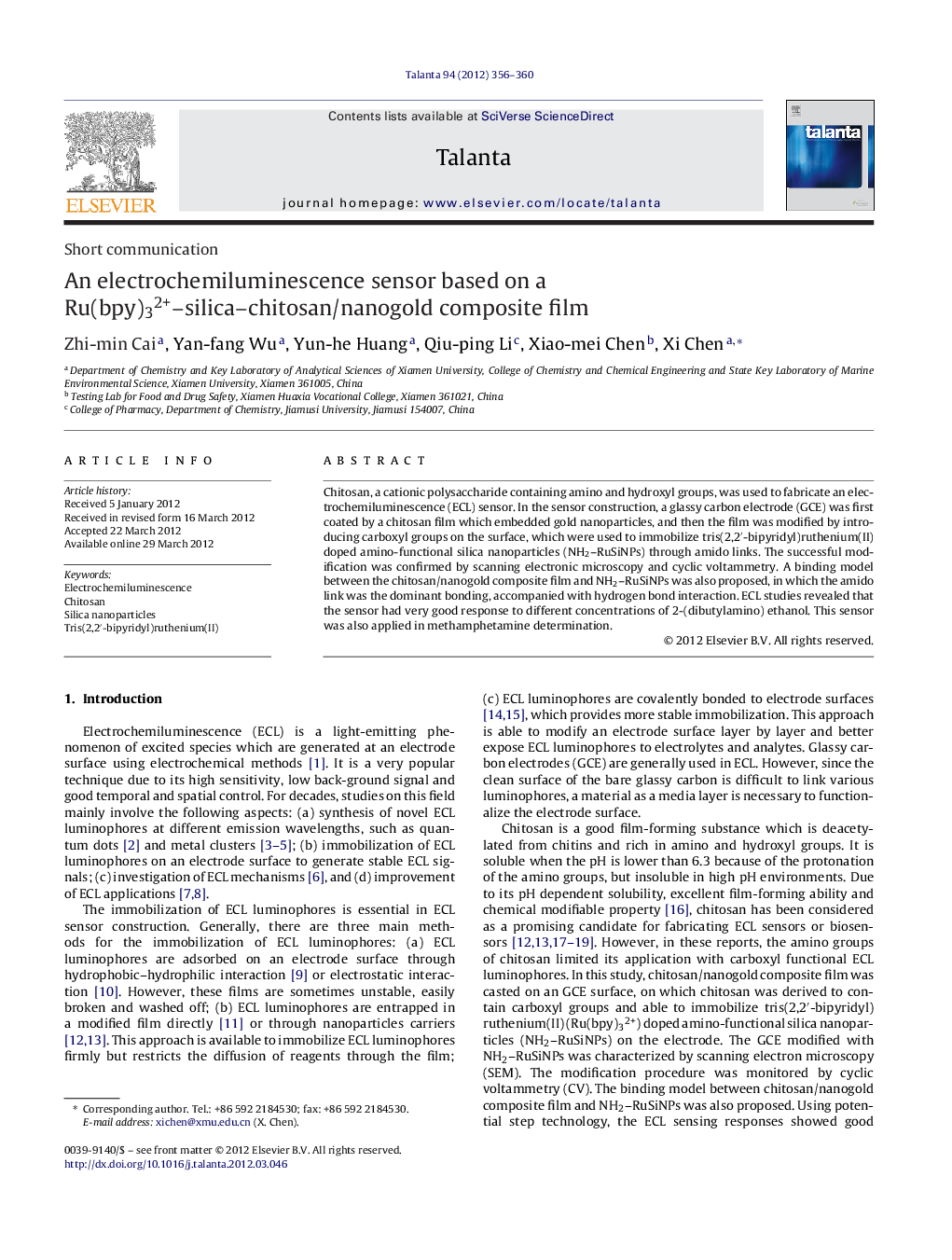| کد مقاله | کد نشریه | سال انتشار | مقاله انگلیسی | نسخه تمام متن |
|---|---|---|---|---|
| 1245661 | 1495841 | 2012 | 5 صفحه PDF | دانلود رایگان |

Chitosan, a cationic polysaccharide containing amino and hydroxyl groups, was used to fabricate an electrochemiluminescence (ECL) sensor. In the sensor construction, a glassy carbon electrode (GCE) was first coated by a chitosan film which embedded gold nanoparticles, and then the film was modified by introducing carboxyl groups on the surface, which were used to immobilize tris(2,2′-bipyridyl)ruthenium(II) doped amino-functional silica nanoparticles (NH2–RuSiNPs) through amido links. The successful modification was confirmed by scanning electronic microscopy and cyclic voltammetry. A binding model between the chitosan/nanogold composite film and NH2–RuSiNPs was also proposed, in which the amido link was the dominant bonding, accompanied with hydrogen bond interaction. ECL studies revealed that the sensor had very good response to different concentrations of 2-(dibutylamino) ethanol. This sensor was also applied in methamphetamine determination.
► NH2–RuSiNPs were synthesized by one-pot approach.
► NH2–RuSiNPs were linked to electrode surface by the mediator chitosan.
► The amino link was the dominant interaction on the interface.
► The modified electrode showed good ECL response to 2-(dibutylamino) ethanol.
Journal: Talanta - Volume 94, 30 May 2012, Pages 356–360